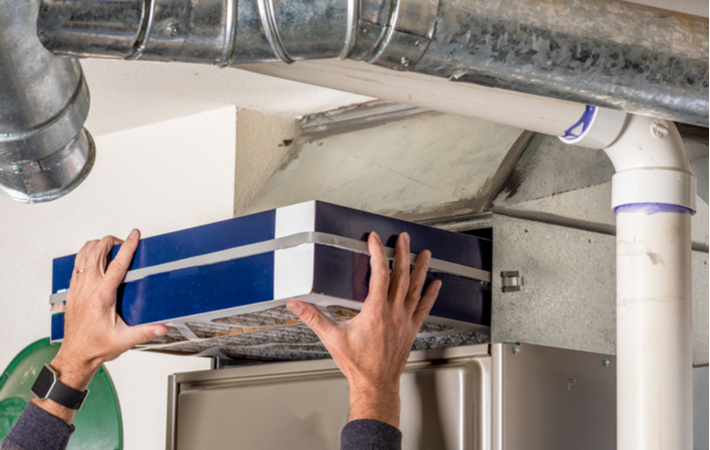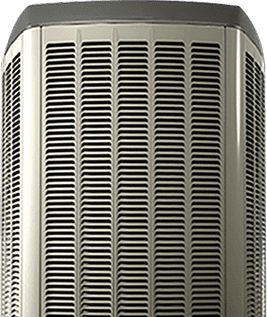Furnace Maintenance 101: What, Why, and When to Service Your Furnace

Furnace 101: What, Why, And When To Service Your Furnace
Like any piece of equipment, your furnace will last longer if it is regularly maintained. Keeping your furnace in good working order is also important from a health and safety perspective: an unmaintained furnace could release carbon monoxide into your home, or stop working when you need it most.
Proper maintenance is also a great way to avoid costly, last-minute repair bills. Investing a little bit of time, money, and energy into furnace maintenance can save you a lot of hassle later on.
Schedule an Annual Checkup
You should have your furnace inspected by a professional at least once per year. Try and schedule this in the early fall so that any significant problems can be addressed before winter arrives.
Maintaining Your Furnace
Depending on how much you use your furnace, you should go through this maintenance and cleaning checklist twice per year, preferably in the fall and the spring. This is because your furnace does most of its work during the winter months. A solid checkup and cleaning before winter help keep your furnace in good working order during the colder months, and the second round of cleaning and maintenance in spring helps you catch any little problems that arose over the winter.
Before you do any maintenance work or cleaning, you should ensure your furnace is turned off. Consult your owner’s manual for specific instructions, but make sure that the electrical and fuel supply is turned off before you start work. The fuel supply is typically located near the oil tank or incoming gas pipe.

During this process, you will often have to consult your owner’s manual. While some components and component locations are fairly universal, not every furnace is precisely the same. If you don’t have a copy of your owner’s manual, check the website of the company that manufactured your furnace and see if you can download one or have one sent to you.
Replace Your Filters
Replacing your filters is an inexpensive way to keep your furnace in good shape. While you may be tempted to use high-efficiency filters instead of disposable ones, you should bear in mind that these can limit airflow, which puts additional strain on your blower motor. Consult your owner’s manual and determine which filters are best for your furnace. How often you should change your filter depends on the filter material. Pleated or polyester filters should be replaced every three months, and fibreglass filters should be changed monthly. If you smoke inside your home or have a pet that sheds you should change your filter every month regardless of what type you use.
How to replace your filters:
Step 1: Consult your owner’s manual and locate the filter access. Open your filter access and remove the filter. Determine the size and type of your filter and record this information on or near your furnace using a permanent marker. You may also want to jot this information down in your owner’s manual for future reference.
Step 2: Dispose of your filter in the trash, not the recycling bin. Close the filter access and use the clasps attached to the furnace to ensure it stays closed.
If your furnace uses a permanent filter, you should consult your owner’s manual for cleaning instructions. This information may also be found on a sticker attached to your furnace. If you can’t find the information you need check the manufacturer’s website or consult a professional before proceeding.
Clean Your Furnace
Cleaning your furnace is a great way to reduce strain on your furnace’s components and extend their life.
Step 1: Vacuum or sweep away any dust that has gathered around your furnace and registers. This helps ensure that air can flow freely, which can prevent future problems and ensure your home stays warm.
Step 2: Consult your owner’s manual for the location of your furnace’s burners. These should also be vacuumed thoroughly.
Step 3: Pull out your flashlight and look for soot deposits. Soot deposits could be a sign that your furnace is not working at peak efficiency and is having combustion problems. If you see soot make a note of it and keep an eye on it so that you can determine if it is from an ongoing issue or leftover from an old problem.
Step 4: Consult your owner’s manual and locate your furnace’s blower. Remove the bolts that are holding your blower in place and gently remove the blower. Using a small brush and a vacuum, give the blades on your blower a thorough cleaning. Replace your blower when you are done.
Step 5: Remove the lower door on your furnace and vacuum the blower compartment thoroughly. You may want to use your flashlight to ensure that you have dealt with any errant dust or dust bunnies. If you can’t clean your blower compartment thoroughly, then you should call in a professional. You will also want to ask your furnace professional to clean your blower compartment during your biannual cleanings.
Step 6: Clean the belts and pulleys that lead to your blower. This can be done with a dry cloth, a small brush, or your vacuum.
Step 7: Vacuum the heat vents in your home thoroughly.
Inspect Your Furnace
You should inspect your furnace and its components twice per year during your biannual cleanings. As always, make sure your furnace is completely off before you begin your inspection.
- Thermostat: Check your electronic thermostat and change the batteries if necessary. You should also check that your settings are correct for the coming season.
- Pilot: Blow away any dust that has collected on the pilot using a straw, and then use an emery cloth to clean the flame sensor.
- Vents: Check your vents for signs of rust or leaking water. Leaking water or rust may be a sign of a bigger problem, so if you discover any, you should consult the troubleshooting portion of your owner’s manual or call a professional.
- Panels: Check your panels and make sure they aren’t loose. Loose panels allow heat to escape and can raise your heating bill or cause your furnace to shut down.
- Drain Lines: Check your drain lines to make sure that they are clear and draining properly.
- Combustion Air Opening: Locate the combustion air opening using your owner’s manual and check that these openings are not blocked or restricted.
- Flue Pipe: Locate your flue pipe and check that there is no corrosion or leaks.
- Drive Belt: Locate your drive belt and check to make sure it is not cracked and does not have frayed edges. If your drive belt is damaged, it will need to be replaced by a professional.
Biannual maintenance is a great way to keep your furnace running smoothly, extend its life, and catch small problems before they escalate. However, no matter how good your DIY skills are, you should still have your furnace inspected once per year by a professional.
